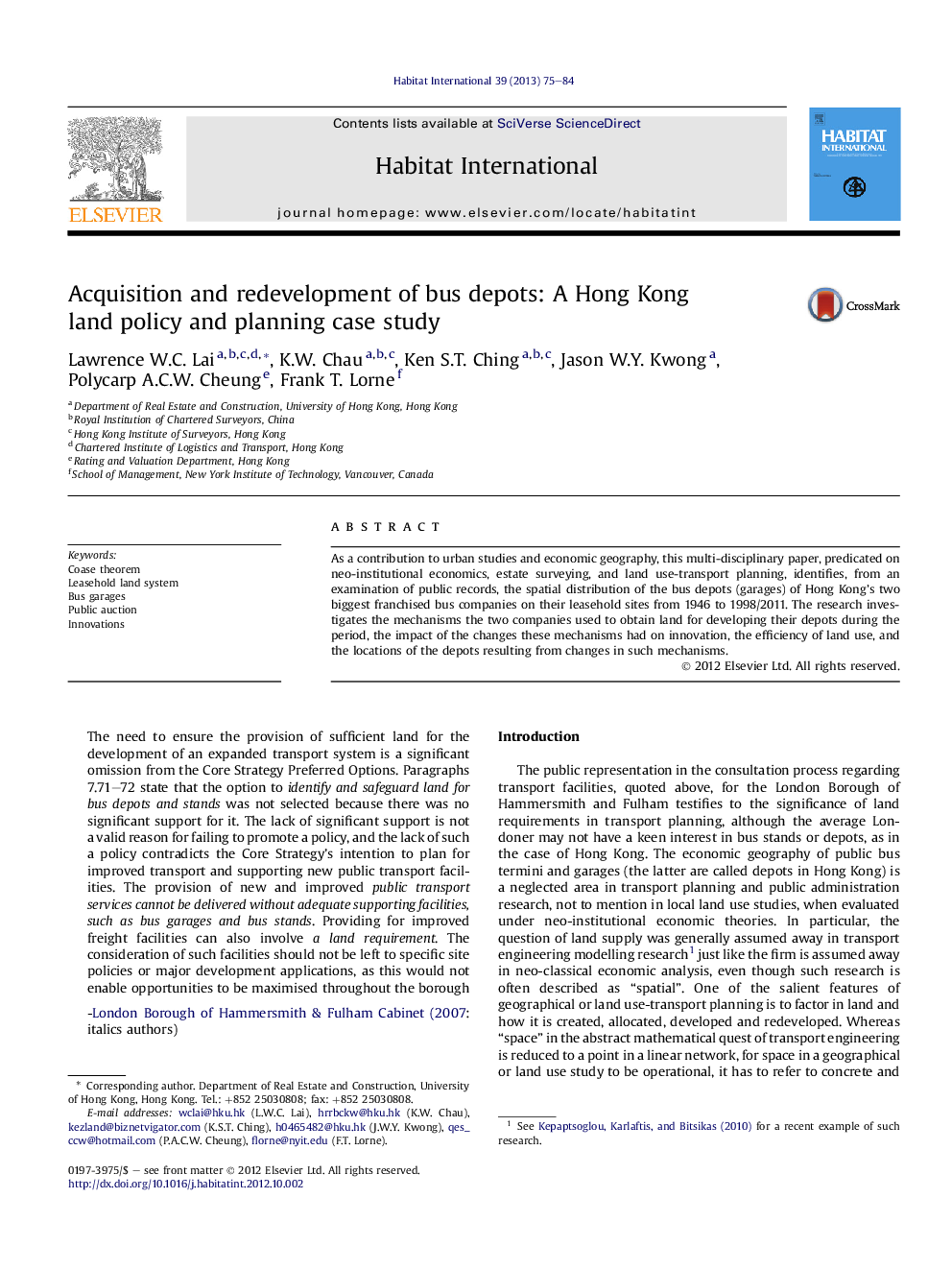| Article ID | Journal | Published Year | Pages | File Type |
|---|---|---|---|---|
| 1048225 | Habitat International | 2013 | 10 Pages |
As a contribution to urban studies and economic geography, this multi-disciplinary paper, predicated on neo-institutional economics, estate surveying, and land use-transport planning, identifies, from an examination of public records, the spatial distribution of the bus depots (garages) of Hong Kong's two biggest franchised bus companies on their leasehold sites from 1946 to 1998/2011. The research investigates the mechanisms the two companies used to obtain land for developing their depots during the period, the impact of the changes these mechanisms had on innovation, the efficiency of land use, and the locations of the depots resulting from changes in such mechanisms.
► We use a multidisciplinary approach to study bus garages using economics and surveying. ► We use publicly accessible and verifiable data. ► Corollary of the Coase Theorem was applied in structuring three propositions. ► Government's land disposal methods had a positive effect on bus and urban innovation.
